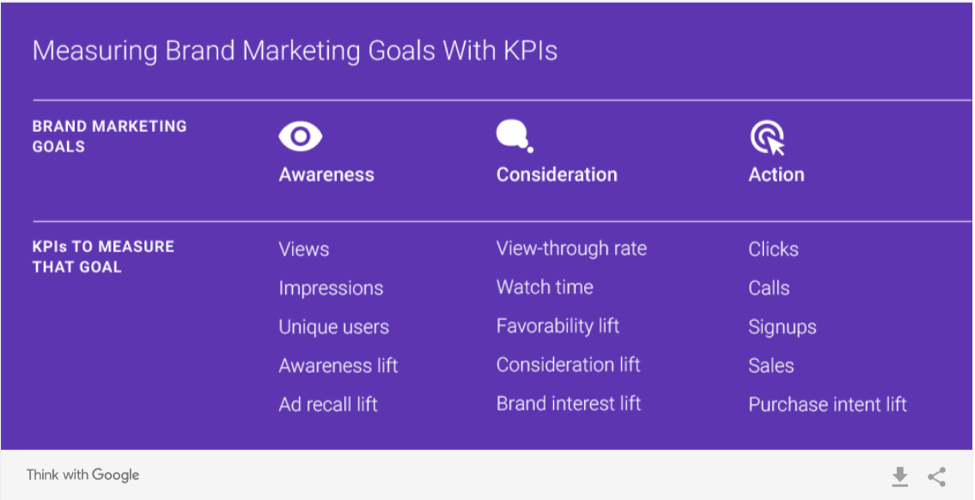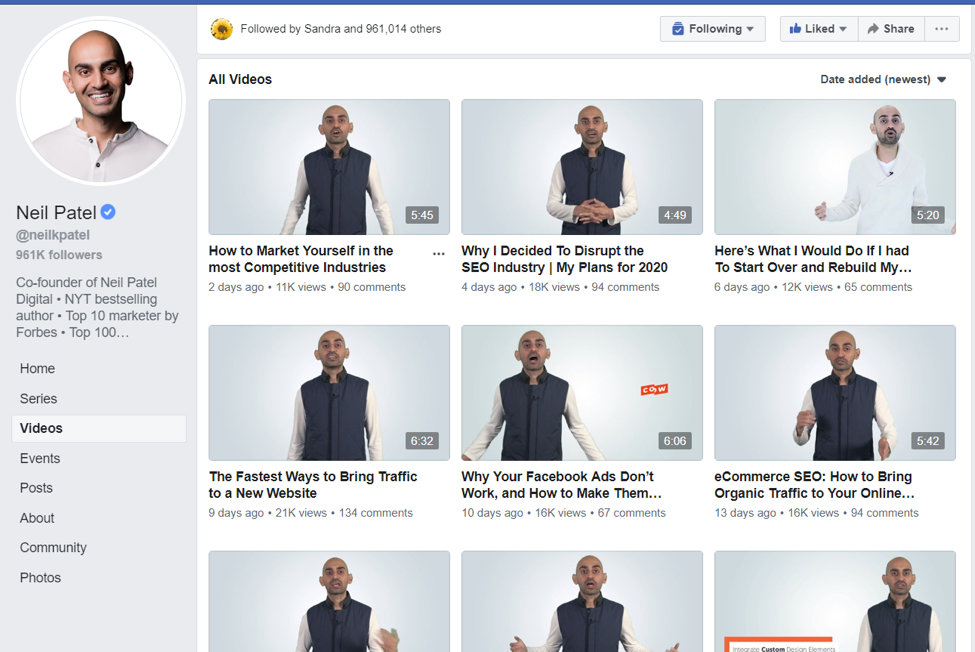Video marketing can be a profitable marketing strategy that meets nearly any marketing objective and delivers a high ROI.
According to research by The Manifest, nearly three-quarters (72%) of companies produce videos. According to research by The Manifest, nearly three-quarters (72%) of companies produce videos. Share on X
Producing high-quality, engaging videos can be a challenge for businesses with small teams and limited budgets.
This article will help small teams create high-quality video content while conserving financial and human resources.
Use these 5 tips to format branded videos that engage and convert your audience.
1. Define Goals and KPIs for Your Videos
Set clear goals for your videos to drive your teams’ strategy, production, and creative processes in a uniform direction.
Most social marketers (80%) say their main strategy is to increase engagement across all social channels, according to a report by Sprout Social. Most social marketers (80%) say their main strategy is to increase engagement across all social channels, according to a report by Sprout Social. Share on X
Video marketing is also an excellent means to boost brand awareness, lead generation, or sales.
Businesses with small teams should choose one specific goal and direct all their efforts toward it.
In addition to increasing your chances of success, defined goals also conserve your financial and team resources and allow your team to create higher-quality, more engaging content.
Setting key performance indicators (KPIs) is equally as important as choosing a primary goal.
Think With Google recommends moving beyond viewer counts when monitoring KPIs. For example, if your goal is engagement, don’t just monitor views and impressions. Consider additional KPIs such as unique users, awareness lift, and recall lift as well.

Businesses should determine their goals and KPIs at the early stages of video production to conserve resources and improve their ROI.
2. Choose A Primary Social Media Channel
If you’re planning on creating videos for social media, choose a primary social platform and direct all your team’s efforts toward that channel.
Then, use your other social media platforms to drive traffic to your primary platform.
Focusing on one primary social channel allows you to cater to one target audience while reducing the amount of time it takes to upload and publish your videos.
Recommended: The Anatomy of Engaging Social Media Videos
3. Upload Videos Directly To Social Media Platforms
Though it takes more time to upload videos directly to social media platforms, it’s a valuable investment of your team’s efforts.
One study found that Facebook native videos get nearly 5X more shares and over 5X more comments than embedded YouTube videos. One study found that Facebook native videos get nearly 5X more shares and over 5X more comments than embedded YouTube videos. Share on X
Social platforms may also provide helpful tools to organize your videos.
Facebook, for example, includes video formatting tools that help brands organize videos into series, encouraging viewers to browse and watch more of your videos.

Source: Facebook
4. Plan Your Video Content in Advance
Businesses should plan their content before writing or producing videos.
Determining the type, topic, and length of your videos in advance saves time and expense while significantly increasing the odds of delivering a high ROI.
What Length Videos Will You Produce?
A recent video marketing study by Wyzowl, nearly 80% of people prefer to learn about a new product or service by watching a short video. A recent video marketing study by Wyzowl, nearly 80% of people prefer to learn about a new product or service by watching a short video. Share on X
The ideal video length varies by platform, but for basic social media videos, there is data to help you determine the best length.
Hubspot research shows that the ideal video length varies from one social platform to the next.
The most-engaging video lengths, according to Hubspot research, are:
- Instagram: 30 seconds
- Twitter: 45 seconds
- Facebook: 1 minute
- YouTube: 2 minutes
Which Types of Video and Topics Will You Create?
B2B audiences are most likely to respond to content such as how-to-guides, case studies, behind-the-scenes-videos, and thought leadership content.
Topics such as industry news, company news, announcements, and human interest stories that focus on your employees and customers are an excellent choice for video marketing.
5. Incorporate Storytelling to Boost Video Engagement
Consider incorporating social media storytelling techniques into your video content when you want to capture attention and boost social shares.
When you make other people the hero of your story, it inspires shares, commenting, and brand loyalty.
For example, Uber produces a video series titled “Meet our driver-partner heroes.”
Uber’s driver hero series showcases Uber drivers who’ve demonstrated heroism in one form or another. For example, one video features driver Michele Champoux talking about the time she and a passenger helped pull people out of a burning car.

Publishing videos that feature employees or customers reduces the need for high-budget films because these type of videos capture attention and engage viewers, regardless of their film quality.
Small Teams Can Produce Big-Quality Videos
Your small team can get big results from social media and website videos, even if your budget is limited.
Plan video content in advance and incorporate proven techniques such as native videos and social storytelling to ensure healthy engagement rates for your brand’s videos.
Related Posts
Kelsey McKeon is a Content Writer at Clutch and Visual Objects. Her content provides actionable tips on how businesses can maximize their working relationships with business services partners.







